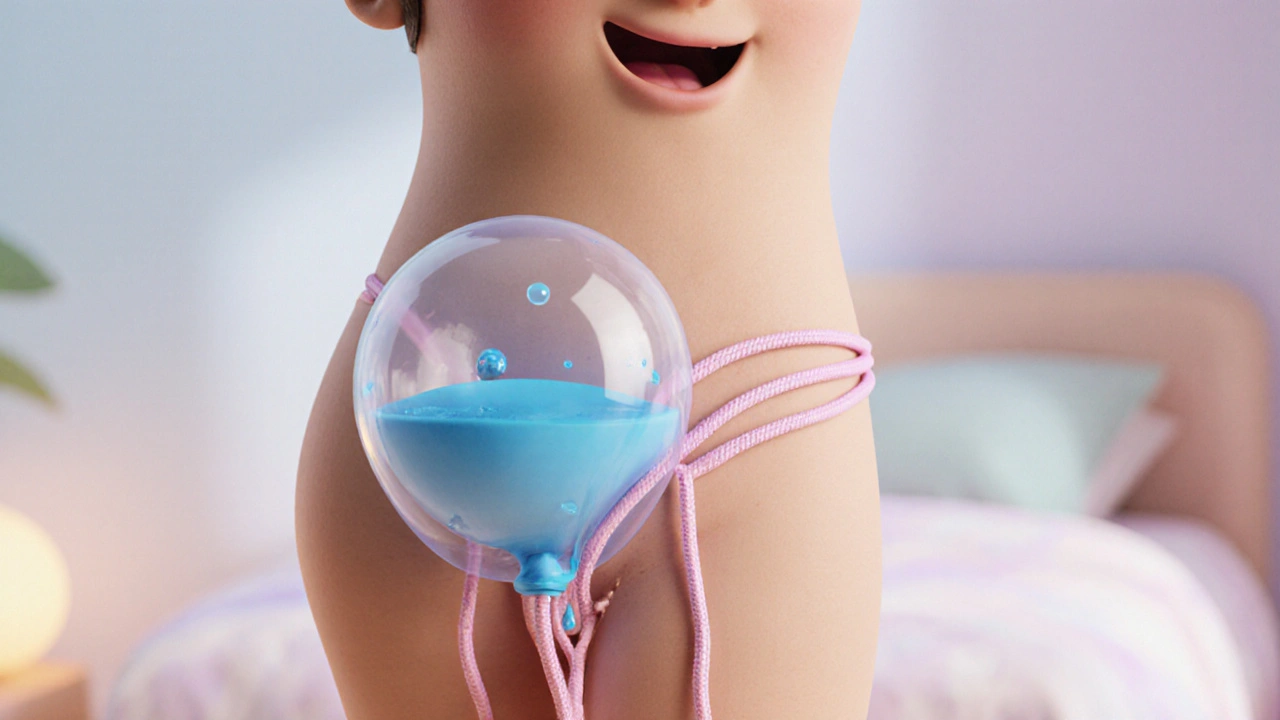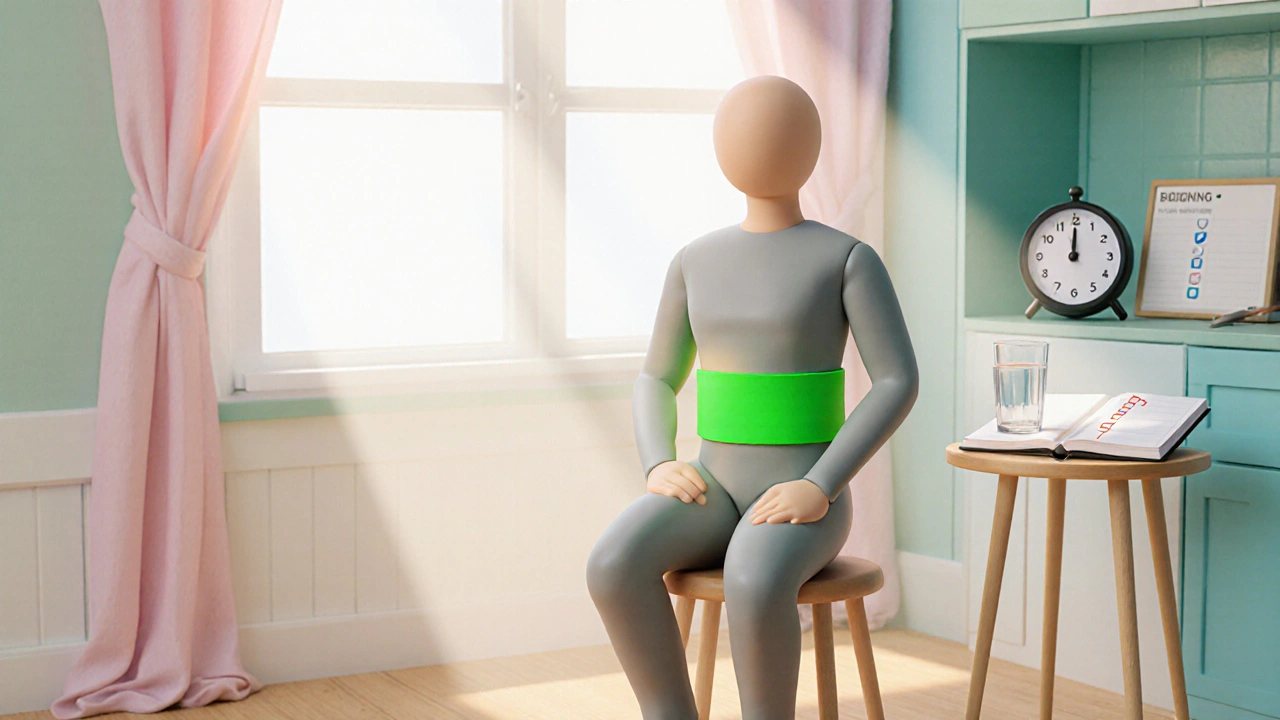Why Urine Leakage Happens & Proven Ways to Stop It

Urinary Incontinence Type Checker
Select your symptoms to identify possible urinary incontinence type and recommended first-line treatments.
Symptoms
When Urinary Incontinence is the involuntary loss of urine due to weakened bladder control, the embarrassment can feel overwhelming, but the science behind it is surprisingly clear. Understanding the why gives you a roadmap to stop it for good.
What Exactly Is Urinary Incontinence?
Simply put, urinary incontinence is any unintentional urine loss. It isn’t a single disease; it’s a symptom that can stem from several distinct mechanisms. The four most common types are:
| Type | Primary Cause | Typical Triggers | First‑Line Treatment |
|---|---|---|---|
| Stress Incontinence | Weak pelvic floor muscles | Coughing, sneezing, lifting | Kegel exercises, weight loss |
| Urge Incontinence | Overactive bladder muscle | Sudden, strong urge | Bladder training, anticholinergic meds |
| Overflow Incontinence | Incomplete bladder emptying | Constant dribbling, weak stream | Catheterization, treat obstruction |
| Functional Incontinence | Physical or cognitive barriers | Mobility issues, dementia | Assistive devices, environmental tweaks |
Why Does It Happen? The Underlying Physiology
The bladder is a muscular sac that stores urine until the brain signals it’s time to release. Two muscle groups do the heavy lifting:
- The Detrusor muscle contracts to push urine out.
- The Sphincter muscles relax to let the flow pass.
If either side of this partnership falters, urine can escape at the wrong moment. Weak Pelvic floor muscles (the supportive hammock beneath the bladder) are the most common culprit, especially in women after childbirth or menopause. In men, an enlarged Prostate can obstruct urinary flow, leading to overflow leaks.
Risk Factors You Can Spot
Knowing the red flags helps you act before the problem spirals.
- Age: Muscle tone naturally declines after 40.
- Pregnancy & childbirth: The pelvic floor stretches dramatically.
- Menopause: Reduced estrogen thins the urinary tract lining.
- Chronic coughing (e.g., COPD, smokers): Repeated pressure on the bladder.
- Obesity: Extra abdominal weight pushes down on the pelvic floor.
- Neurological conditions: Multiple sclerosis, Parkinson’s, or spinal injuries disrupt nerve signals.
- Medications: Diuretics, antihistamines, and some antidepressants can increase urgency.

How to Diagnose - When to See a Professional
Self‑assessment is a good start, but a clinician can pinpoint the exact type and cause.
- Medical history & bladder diary: Track fluid intake, leakage episodes, and triggers for a week.
- Physical exam: A doctor checks pelvic floor tone and prostate size.
- Urodynamic testing (often Urodynamic testing): Measures bladder pressure during filling and emptying.
- Imaging: Ultrasound or MRI may reveal structural issues.
If leaks are frequent, painful, or accompanied by blood, seek help right away.
Everyday Lifestyle Tweaks That Make a Difference
Before you reach for a prescription, try these low‑cost changes.
- Fluid management: Sip water regularly, but avoid large volumes at once. Cut back on caffeine and alcohol, which irritate the bladder.
- Weight control: Even a 5‑kg loss can reduce pressure on the pelvic floor.
- Timed voiding: Go to the bathroom every 2‑3 hours, regardless of urge, to train the bladder.
- Quit smoking: Eliminates chronic cough and improves circulation.
Pelvic Floor Training - The Kegel Blueprint
When done right, Kegel exercises are the gold standard for urinary incontinence. Here’s a step‑by‑step guide.
- Identify the right muscles: While urinating, try to stop the stream. Those are your pelvic floor muscles.
- Contract and hold for 5 seconds, then relax for 5 seconds. Aim for 10 repetitions.
- Gradually increase hold time to 10 seconds as strength improves.
- Do three sets daily - morning, afternoon, evening.
- Consider a Biofeedback device or mobile app to ensure you’re engaging the correct muscles.
Consistency is key; noticeable improvement often appears after 4‑6 weeks.
Medical Treatments - When Lifestyle Isn’t Enough
If leakage persists, a doctor may suggest one or more of the following.
- Medications: Anticholinergic drugs (e.g., oxybutynin) calm an overactive detrusor muscle. Mirabegron, a beta‑3 agonist, offers a non‑anticholinergic alternative.
- Topical estrogen (for post‑menopausal women): Restores urethral tissue elasticity.
- Minimally invasive procedures:
- Sling procedure: A mesh or tissue strip supports the urethra, ideal for stress incontinence.
- Bulking agents: Injections that tighten the urethral opening.
- Surgical options for severe cases:
- Artificial urinary sphincter (primarily in men after prostate surgery).
- Prostatectomy revision if an enlarged prostate blocks flow.
Quick Checklist - What to Do Today
- Start a bladder diary for 7 days.
- Cut caffeine, alcohol, and carbonated drinks.
- Do Kegel exercises three times a day.
- Check your weight - aim for a healthy BMI.
- Schedule a primary‑care visit if leaks occur more than once a week.
Frequently Asked Questions
What is the most common type of urinary leakage?
Stress incontinence tops the list, especially among women who have given birth or are post‑menopausal.
Can men get urinary incontinence?
Yes. Prostate enlargement, post‑prostate‑surgery effects, and neurological issues are typical causes in men.
How long does it take to see results from Kegel exercises?
Most people notice improvement after 4‑6 weeks of consistent practice. Full benefits may take 3‑6 months.
Are there risks to the sling procedure?
Complications are rare but can include mesh erosion, urinary retention, or infection. A skilled surgeon minimizes these risks.
When should I see a doctor for urine leakage?
If leaks happen more than once a week, cause skin irritation, interfere with daily life, or are accompanied by pain or blood, schedule an appointment promptly.

Brian Van Horne
October 18, 2025 AT 20:30Indeed, the meticulous delineation of pelvic floor dynamics renders this guide an indispensable compass for reclaiming continence.
Norman Adams
October 18, 2025 AT 21:20Oh, because we all have endless spare time to log bladder diaries, right? The sheer delight of mastering Kegels is just the zenith of modern living.
Margaret pope
October 18, 2025 AT 22:10Hey everyone remember you’re not alone in this journey we all can start with a simple bladder diary and a few gentle Kegels together you’ll see progress day by day
James Mali
October 18, 2025 AT 23:00One could argue that in the grand theater of bodily functions, leakage is merely an understudy stepping into the spotlight; yet the script calls for effort, not applause.
Matthew Miller
October 18, 2025 AT 23:50Let’s crush those leaks! Grab a glass of water, set a timer, and squeeze those pelvic muscles like you’re pumping up a superhero-consistency is the secret weapon!
Alex Lineses
October 19, 2025 AT 00:40First, let’s establish a baseline by implementing a seven‑day voiding log to quantify frequency and volume of episodes.
This data acquisition phase is critical for phenotyping the incontinence subtype-stress, urge, overflow, or functional.
Next, evaluate pelvic floor muscle strength using a perineometer or biofeedback EMG to generate objective metrics such as contract amplitude and fatigue index.
If the detrusor overactivity score exceeds the normative threshold, consider anticholinergic pharmacotherapy as a second‑line intervention.
Conversely, a low squeeze pressure reading warrants a progressive overload protocol of pelvic floor muscle training.
The training regimen should follow a periodized schedule: hypertrophy phase (10‑15 repetitions, 5‑second holds) transitioning to endurance phase (20‑30 repetitions, 2‑second holds).
Incorporate functional integration exercises like squat‑to‑stand while performing pelvic contractions to enhance neuromuscular coordination.
Nutrition-wise, maintain optimal hydration-approximately 30 mL per kilogram body weight-but avoid bladder irritants such as caffeine and carbonated beverages.
Weight management is another modifiable variable; a BMI reduction of 5 % can decrease intra‑abdominal pressure by a measurable margin.
For patients with refractory stress incontinence, a mid‑urethral sling procedure offers a minimally invasive solution with success rates above 85 %.
Post‑operative rehabilitation should include a six‑week protocol of graded activity and continued pelvic floor reinforcement.
If urgency predominates, bladder training with timed voiding intervals and urge suppression techniques should be instituted.
Adjunctive modalities like sacral neuromodulation are reserved for complex cases refractory to pharmacologic and behavioral therapy.
Throughout the therapeutic timeline, employ validated outcome instruments such as the ICIQ‑SF to monitor patient‑reported improvement.
Regular interdisciplinary consultations-urology, physiotherapy, and primary care-ensure a holistic approach to management.
By adhering to this algorithmic framework, most individuals will achieve functional continence and an enhanced quality of life.
kendra mukhia
October 19, 2025 AT 01:30Honestly, it’s astounding how many people still treat urinary leakage like a taboo, clutching their secrets like relics from a bygone era; shame is the real incontinence here. The medical community has already handed us the checklist-if you’re not following it, you’re simply neglecting yourself. Wake up, own the problem, and stop letting embarrassment dictate your health.
Bethany Torkelson
October 19, 2025 AT 02:20Enough with the polite tone-leakage is a nightmare that hijacks every moment, turning even a simple walk into a battlefield of dread. The constant fear of a surprise puddle ruins confidence, and every suggested remedy feels like a hollow promise. Snap out of the victim mindset and start taking decisive action now.
Grace Hada
October 19, 2025 AT 03:10Leaking is the universe’s reminder that control is an illusion; fight it with relentless resolve.
Rohit Sridhar
October 19, 2025 AT 04:00Hey there! I totally get how frustrating urinary leaks can feel, but trust me, you’ve already taken the first step by reading this guide. Start simple: track your fluid intake and schedule bathroom trips every two to three hours-this builds a rhythm that your bladder will love. Pair that with a few daily Kegel squeezes, and you’ll notice a shift in confidence within weeks. Remember, every tiny victory adds up, and you’ve got a whole community cheering you on. Keep at it, and celebrate each leak‑free day!
Linda A
October 19, 2025 AT 04:50The silent echo of a dribble can haunt the mind like a phantom whisper, urging us to confront the frailty of the flesh. Yet within that shadow lies the catalyst for introspection, a call to master the body’s hidden levers. Embrace the discipline, and the specter fades.